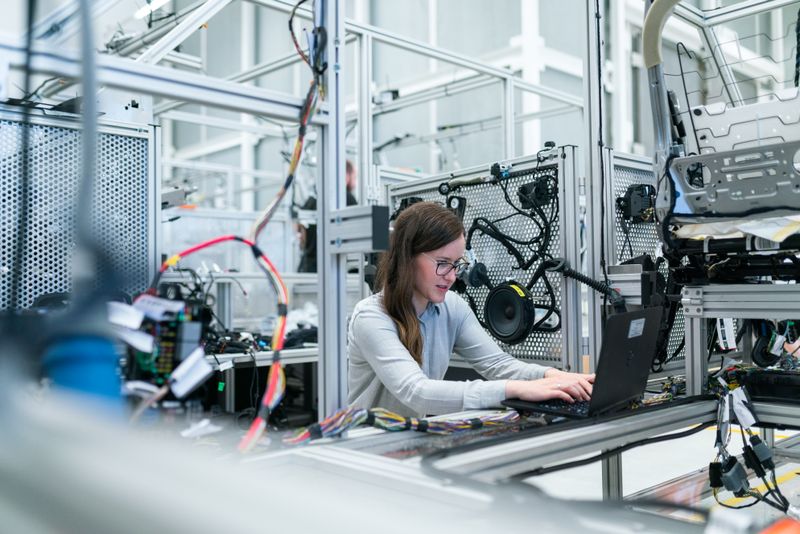Raspberry Pi 5: The Next Generation
Introduction
The highly anticipated Raspberry Pi 5, the latest iteration of the popular single-board computer, has been unveiled to the delight of tech enthusiasts and hobbyists everywhere. Promising twice the speed of its predecessor, the Raspberry Pi 4, and boasting new features such as encryption capabilities and a PCIe interface, the Raspberry Pi 5 is shaping up to be a game-changer in the world of embedded computers. In this report, we will delve into the key specifications and upgrades of the Raspberry Pi 5, examine the implications of its in-house design and development, and explore its potential applications.
Key Specifications and Upgrades
The Raspberry Pi 5 comes equipped with a powerful 16nm quad Cortex-A76 processor, offering a significant boost in processing speed. With a clock speed of 2.4GHz, this new processor promises enhanced performance and improved multitasking capabilities. Furthermore, the Raspberry Pi 5 supports dual 4Kp60 display output, allowing users to enjoy high-quality visuals and graphics.
One of the most notable upgrades in the Raspberry Pi 5 is its encryption capabilities, which have become increasingly important in the context of network-attached embedded computers. This enhancement ensures that sensitive data transmitted over the network remains secure and protected.
In terms of connectivity, the Raspberry Pi 5 introduces an available PCIe interface (2.0 x1), which has already proven popular in the Raspberry Pi Compute Module 4. This interface enables fast connectivity to peripherals, offering users an expanded range of options for customization and expansion. Additionally, the Raspberry Pi 5 includes an on-board real-time clock (RTC), although an external battery is required for its operation.
In-House Design and Development
A noteworthy aspect of the Raspberry Pi 5 is that it is the first Raspberry Pi computer to feature silicon designed in-house in Cambridge, UK. The RP1 IO controller, designed by the same team that created the RP2040 MCU and manufactured on TSMC’s 40LP process, is responsible for providing essential functionalities such as USB, Ethernet, MIPI, and GPIO. The connection between the RP1 IO controller and the main CPU, Broadcom’s BCM2712, is facilitated by a four-lane PCI Express 2.0, operating at a speed of 16Gbit/s.
The decision to design and develop the Raspberry Pi 5 in-house showcases the commitment of the Raspberry Pi Foundation to pushing the boundaries of innovation. By taking control of the silicon design process, they can tailor the hardware to their specific requirements and optimize performance. The development of the RP1 IO controller reportedly cost $15 million, emphasizing the scale of investment and dedication invested in bringing the Raspberry Pi 5 to fruition.
Potential Applications
The Raspberry Pi 5’s enhanced performance and upgraded features open up a wide range of potential applications. Its increased processing power and dual 4K display output make it a compelling choice for media centers and digital signage solutions. With the added encryption capabilities, it becomes an attractive option for network-attached embedded computer systems, such as IoT devices, where data security is paramount.
The availability of a PCIe interface further expands the possibilities for peripheral connectivity. This makes the Raspberry Pi 5 suitable for applications that require high-speed data transfer, such as edge computing devices and industrial automation systems. Additionally, the on-board real-time clock adds a level of precision timing and synchronization, making it suitable for time-sensitive applications and projects.
Editorial and Advice
The release of the Raspberry Pi 5 represents another leap forward in the world of single-board computers, showcasing the continuous progress achieved by the Raspberry Pi Foundation. With its enhanced performance, encryption capabilities, and expanded connectivity options, the Raspberry Pi 5 offers a compelling solution for a wide range of applications.
For enthusiasts and hobbyists considering the purchase of the Raspberry Pi 5, it is essential to evaluate their specific needs and requirements. The improved processing power and dual 4K display output make it an excellent choice for those seeking advanced multimedia capabilities. However, for simpler projects or applications, previous models such as the Raspberry Pi 4 may suffice.
Furthermore, the availability of the PCIe interface opens up exciting possibilities for customization and expansion. Users should assess whether they require the high-speed peripheral connectivity offered by this interface, as it could significantly enhance the functionality and versatility of their projects.
Finally, the added encryption capabilities of the Raspberry Pi 5 make it a particularly compelling choice for those concerned with data security. When deploying network-attached embedded computers, such as IoT devices, integrating encryption into the system architecture is crucial for protecting sensitive data. The Raspberry Pi 5’s native encryption capabilities provide an added layer of security and peace of mind.
In conclusion, the Raspberry Pi 5 is set to revolutionize the single-board computer landscape with its enhanced performance, upgraded features, and in-house design. Whether it’s for multimedia applications, edge computing, or network-attached embedded systems, the Raspberry Pi 5 offers a powerful and versatile platform for innovation. As with any technological investment, careful consideration of specific project requirements is essential, ensuring that the Raspberry Pi 5’s capabilities align seamlessly with the intended application.

<< photo by ThisIsEngineering >>
The image is for illustrative purposes only and does not depict the actual situation.
You might want to read !
- Raspberry Pi 5 Unveiled: Revolutionizing the World of Single Board Computers
- The Influence of Celebrity Children: Examining the Phenomenon of “Nepo Babies”
- “Unveiling the Next Generation: Samsung Galaxy Z Flip 5 and Z Fold 5 Soar to New Heights”
- “The Arrival of Meta Quest 3: Unveiling a New Era of Mixed Reality Experiences”
- Introducing Meta Quest 3: Unlocking New Realities at an Unbeatable Price
- “Reflecting on 25 Years of Innovation: Google Doodle Celebrates a Milestone”
- Google’s 25th Birthday: A Look Back at Its Humble Origins and 10 Intriguing Trivia
- The Future of Gaming: Exploring the Excitement of ‘PAYDAY 3’ on GeForce NOW
- A Look Into Apple’s Watch Series 9: Enhanced Processor and Hands-Free Functionality
- Rosh Hashanah 2023: A Deep Dive into the Celebration and Timing
- Editorial Exploration: Unveiling the Exciting Announcements for Amazon Prime Day 2023
Title: “Revamped Prime Day 2023 on the Horizon: Early Apple Deals and Dates Revealed”




